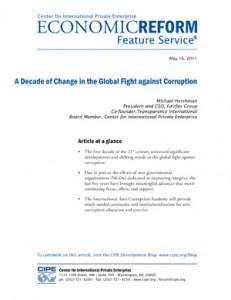
Posts on this blog (111 to be exact) have explored a variety of specific measures to fight corruption, including mobile applications that map where people pay bribes; individual country assessments from NGOs that evaluate the status of corruption in various countries and hopefully spark reforms where necessary; proclamations from government officials that may or may not hold meaning for the future of anti-corruption legislation; a website that provides legal counsel to citizens on how to resist corruption; and, in one case, an official who just asks others if they have paid a bribe. Indeed there are many anti-corruption tools yet no formal toolbox to house them all.
According to Michael Hershman, an internationally recognized expert on matters relating to transparency and accountability, continuity and institutionalization in anti-corruption efforts is lacking. He writes, “Simply put, there is a woeful lack of professional anti-corruption education, particularly in countries most prone to corruption. Since that is the case, where will the next leaders of the anti-corruption efforts come from?”
Enter the International Anti-Corruption Academy. In this Economic Reform Feature Service article, Hershman details the last decade in the global fight against corruption and how a school for anti-corruption professionals will capture best practices in the field. You can read the article in full here: http://www.cipe.org/featureservice/?p=629
Article at a glance:
• The first decade of the 21st century witnessed significant developments and shifting trends in the global fight against corruption.
• Due in part to the efforts of non-governmental organizations (NGOs) dedicated to improving integrity, the last five years have brought meaningful advances that merit continuing focus, effort, and support.
• The International Anti-Corruption Academy will provide much needed continuity and institutionalization for anticorruption education and practice.

